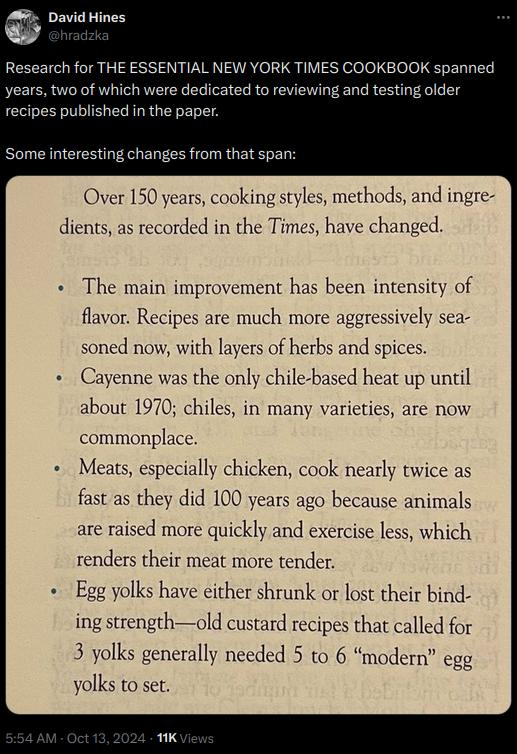this post was submitted on 13 Oct 2024
1 points (100.0% liked)
Science of Cooking
1111 readers
1 users here now
Welcome to c/cooking @ Mander.xyz!
We're focused on cooking and the science behind how it changes our food. Some chemistry, a little biology, whatever it takes to explore a critical aspect of everyday life.
Background Information:
founded 1 year ago
MODERATORS
you are viewing a single comment's thread
view the rest of the comments
view the rest of the comments

Regarding eggs... Somehow it seems that eggs have gone rather small. When I have to buy eggs in the supermarket, they often have only S and M sizes, and they are usually at the lower end of the weight group. I have checked, M oficially range from 53 to 63 grams here, but I've tested several egg cartons I've bought at supermarkets here and had only one egg of 60g in a total of 80, everything else was usually in the 51(!) to 58g range. In comparison to the XL eggs I usually buy at the local farm shop, this is quite a difference.
Interesting that egg sizing labels aren't that universal. In the U.S. most big stores primarily stock Large (minimum weight 56.7g) and Extra Large (63.8g), while Jumbo (70.9g) is still probably more common than Medium (49.6g).
(My methodology for getting weights was that I used the government labeling requirements for minimum weight per dozen, converted ounces to grams, divided by 12).
Our ranges are S for anything below 53g, M to just below 63g, L to just below 73g, and XL for anything 73g and up. I had eggs in the 85+g range from that farm shop occasionally (that must have been a monster chicken!), and even one 10-pack with 7 double yolk eggs once.
Once they had an offer of size S eggs, and even small ones for that group. They were not much bigger than Quail eggs and from the first layings of young hens. I bought a box of them for fun and fried three of them for breakfast. My son took a look at the tiny little egglet I placed on his plate and he asked me what I had done to the rest of the egg...